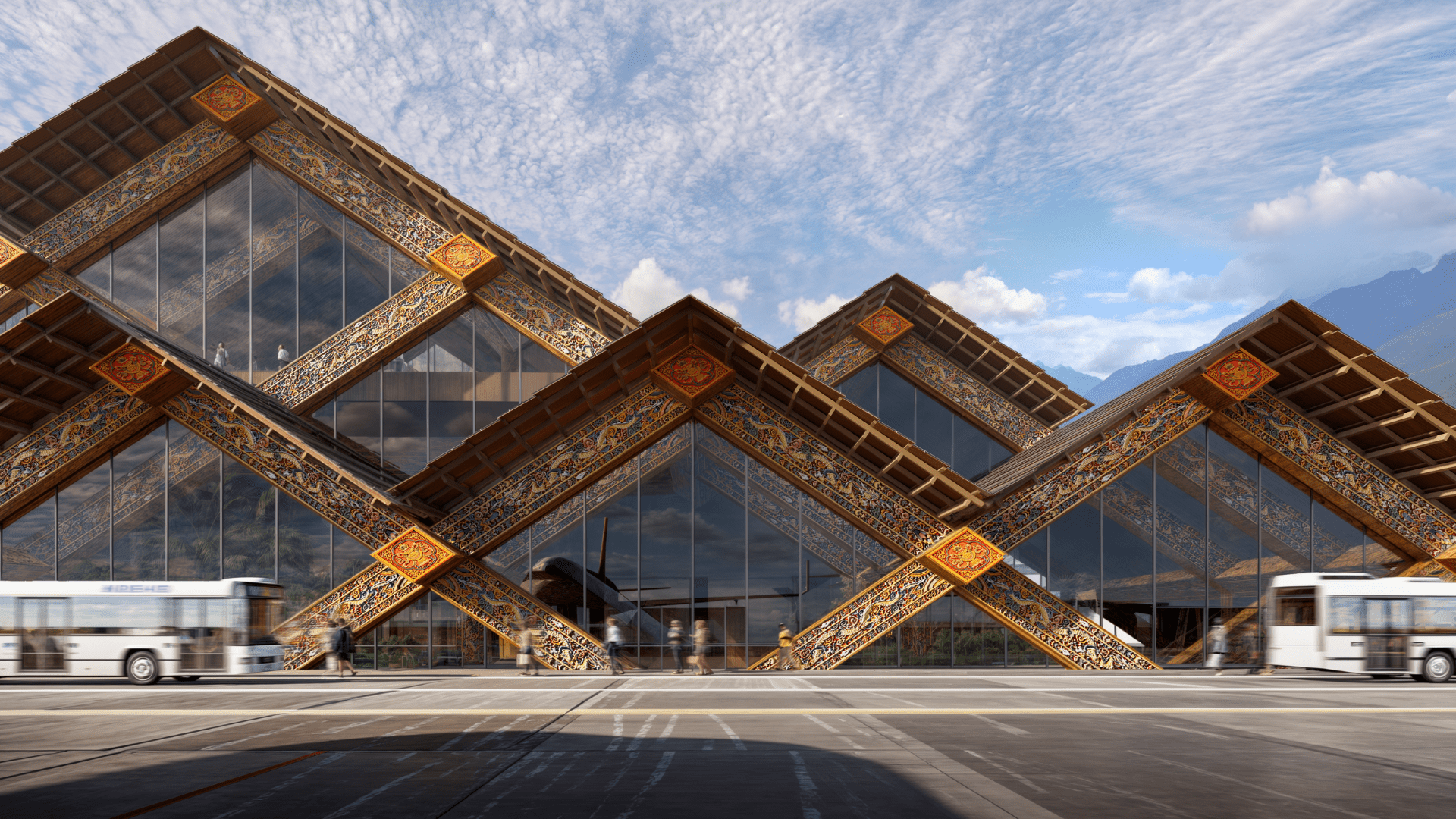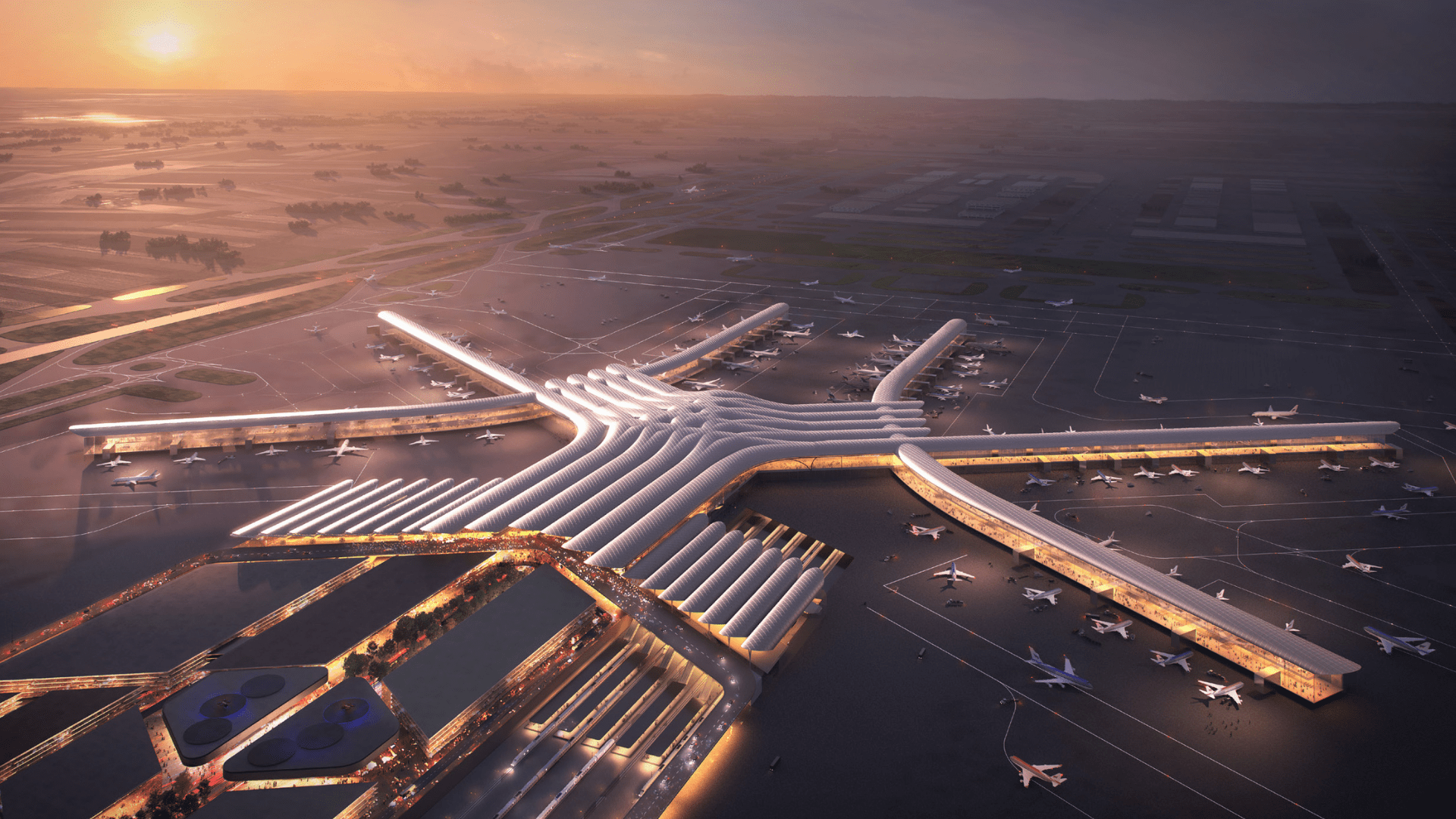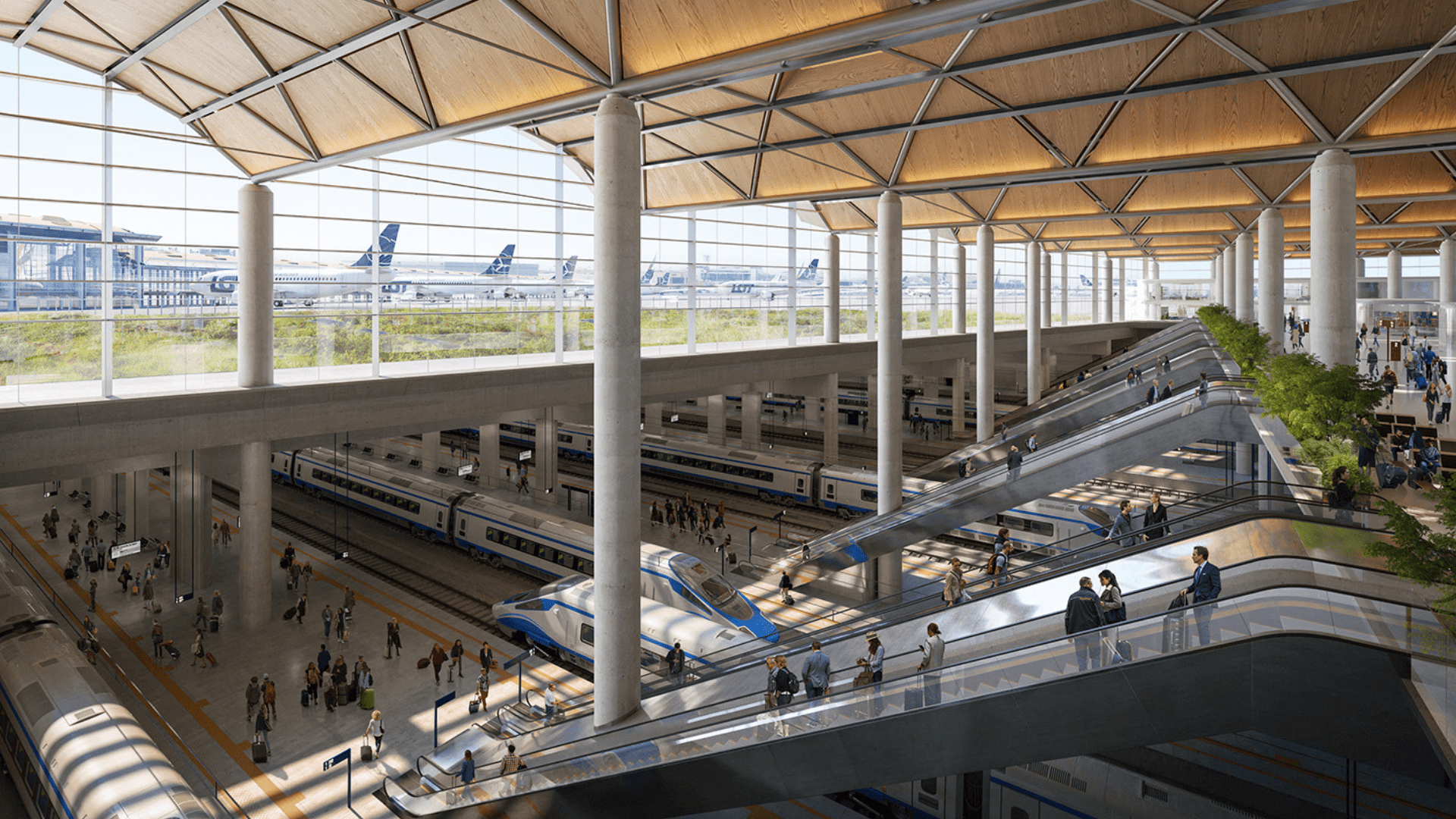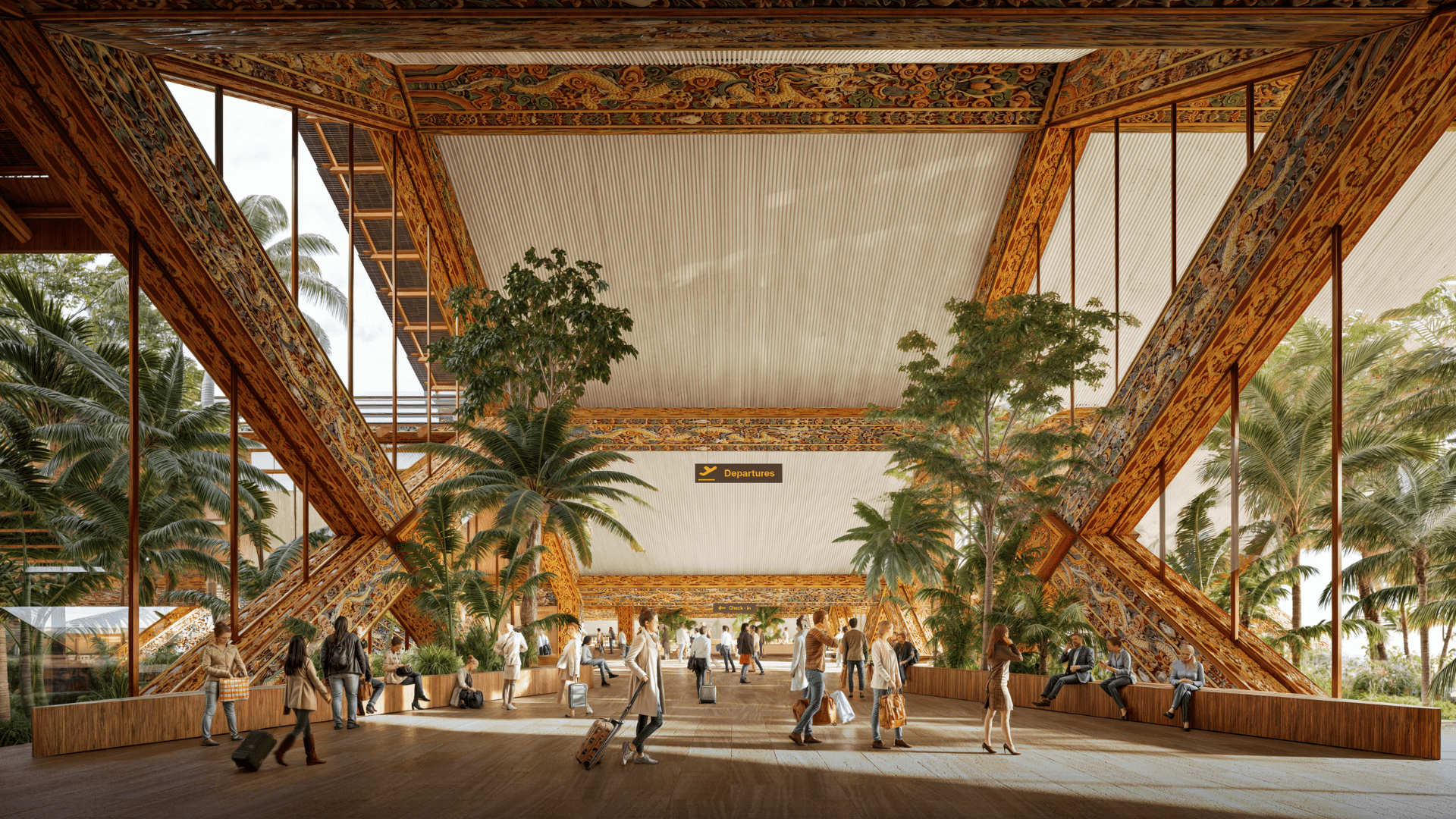Luchtvaart Nieuws: Aviation pioneers shape their world far into the future

This is an English translation of an article that first appeared in the Dutch issue 142 of Luchtvaart Nieuws in June 2025.
When KLM director Albert Plesman made plans shortly after World War II to finally resume flights to the Dutch East Indies, it seemed like an impossible task. With the then-available DC3 Dakotas and Lockheed Constellations, several stopovers were needed to reach Batavia (the capital of the Dutch East Indies during the colonial period), but due to the devastation of war, airfields everywhere lay in ruins. Plesman didn’t give up. He envisioned that Dutch engineers could take the lead in rebuilding runways and landing strips in the Middle East and Asia. He sought support from several Dutch construction companies and from Philips Electronics Company. He then recruited a small technical team.
Soon, a dedicated workspace was set up in KLM’s headquarters in The Hague for the “Netherlands Airport Consultants” (NACO). KLM employees at the time referred to it as “the engineers’ room.”
The first task for Plesman’s specialists was to make the airport in Alexandria, Egypt operational again. They then repaired other airfields as well, enabling KLM to once again fly the best routes to and from the now-independent Indonesia.
Batavia had become Jakarta. The NACO engineers continued doing what they did best: designing, building, and improving airports.
The little room in the KLM office soon became too small. NACO was officially founded in 1949 as an independent company and later became part of the engineering firm Haskoning. For a long time, the 220 airport consultants of today’s NACO worked from The Hague. Only this spring did they move to a special location on the university campus in Delft. A few years ago, Haskoning (6,000 employees who collectively own the company, with annual revenues of over 700 million euros) purchased the historic 1912 building of the former Faculty of Mining. The building was renovated and updated to meet modern standards of energy use and ergonomic working.
From Delft, NACO experts now perform their craft. What is their ‘craft’? Around the world, they design runways, airport terminals, baggage systems, aircraft parking areas, taxiways, cargo handling facilities, check-in counters, connections to train and bus transport, customer satisfaction measurements, and all sorts of other things needed for a modern airport in 2025. They also regularly plan entirely new airports, such as Daxing in Beijing.
Over 75 years, NACO has grown into a leading aviation consultancy. From Lima to Singapore, from Cape Town to Tromsø, and from Anchorage to Christchurch—there’s hardly an airport in the world where NACO’s experts haven’t devised, calculated, and implemented smart solutions to pressing problems.

Global aviation is far from finished. On its own website, NACO states its mission as follows: “We create a sustainable, resilient, and healthy future for aviation.”
Plesman, here we come!
Geopolitical perspective
Aulman and his colleagues are currently busy with the Centralny Port Komunikacyjny (CPK), a combined airport–high-speed train station–bus terminal in Poland. “Frédéric Chopin Airport near Warsaw is bursting at the seams. Prosperity in Poland continues to rise, leading to a steady increase in passenger numbers. The new airport will also become a crucial hub from a geopolitical perspective,” says Aulman.The previous Polish government, led by Prime Minister Mateusz Morawiecki (PiS), made ambitious plans for a new airport as the central point in the country’s transport infrastructure. The airport was intended to far surpass the old Frédéric Chopin Airport (19 million passengers per year). Projections include 34 million, 44 million, and eventually 100 million passengers annually.
To accommodate such growth, space is essential. That’s why the airport’s location was planned much farther from central Warsaw—roughly halfway between Warsaw and the city of Łódź. It’s meant to become a kind of “Central Poland,” a hub for air, rail, and bus traffic from various Central European countries. This is not without strategic significance.
With strong support from the European Union, Poland is investing billions in its rail infrastructure. The goal is to connect the Baltic States to the European rail network as quickly as possible. After Russia’s invasion of Ukraine in February 2022, an additional priority emerged: connections to Lviv and Kyiv. If flying becomes too dangerous, the train remains a viable option—as has been demonstrated in Ukraine in recent years.
Since 2014, successive Ukrainian governments have been working to reorient the routes of railways and highways. Built during the Soviet era, all Ukrainian routes were directed toward Moscow, the centre of the communist empire. Democratic governments saw their future in Brussels and understood that they needed to reorient national infrastructure—not toward the East as the endpoint, but toward the West. A massive undertaking requiring great perseverance. The CPK project in Poland also presents opportunities for Ukrainians.
In a twist of historical irony, it’s quite fortunate that Polish railway connections were designed in the 19th century according to the logic of the then-Prussian rulers. They wanted to travel by steam train from Gdańsk or Wrocław to Berlin and Potsdam. Those rail connections have remained in place for over a century, and in terms of European unity in 2025, that’s not a bad thing.
A year and a half ago, a new government took office in Poland, led by Christian Democrat Donald Tusk, former President of the European Council. Would he cancel the mega-project CPK? Of course not. The new Polish government declared CPK a matter of national interest last year and continued with the project. However, there would now be increased attention to regional rail connections.
Announcements
Engineers calculate, but politicians decide. When designing an airport, you have to consider economic conditions, optimal flight safety, eliminating various terrorism risks, hindering drug traffickers, a multitude of technical possibilities and limitations in flight handling, pilots who want to “park close to the gate” for refuelling, and—not least—the psychology of the traveller. How many public announcements can people handle? Do they get stressed by yet another “final call” or other loudspeaker messages? At what point do signage and wayfinding take over? Do passengers even still hear the message “you are delaying the flight”?But you also shouldn’t hang too many signs and screens, or your airport turns into a visual mess where people can’t see the forest for the trees. In short, an airport is a thoughtful balance of competing interests, visionary planning, and everyday concerns, with politics ultimately determining the outcome. Or not, of course.
Aulman and his NACO colleagues were involved between 2014 and 2018 in the construction of the new international airport for Mexico City. Then-president Enrique Peña Nieto embraced the plan, but his successor Manuel López Obrador saw things differently. The runways were already in place. The terminal columns were standing. But López Obrador waived the results of a legally controversial referendum, accused his predecessor of corruption, and halted further construction. The topic resurfaced during the 2024 election campaign. But presidential candidate Claudia Sheinbaum dismissed the new Texcoco airport plan. Since she won the election and now holds power in Mexico, the chaos at the old, overcrowded Aeropuerto Benito Juárez in Mexico City is likely to continue for some time.

A work of art
You can design as cleverly as you like, but an airport is ultimately also a political science artwork. If there’s one nation that knows all about this, it’s the Dutch—with their Schiphol. Everyone here has a deeply personal opinion about what should happen next in the Haarlemmermeer polder.
It’s striking how cautiously NACO’s Director of Business Development, Joeri Aulman, speaks about it. After all, he knows the detailed considerations that have shaped Schiphol’s history. “There was great international appreciation for Schiphol. The foundation is still there.”
He believes in continuous improvement, not in a giant leap toward a new airport at sea. Aulman: “Once every ten years, we’re commissioned to study the feasibility of such an airport. Each time, it turns out that Dutch companies and knowledge institutions are perfectly capable of building an artificial island and constructing an airport there. But to truly reduce aircraft noise, it would have to be far out in the North Sea. That would require a long tunnel to the airport island, which would cost many times more than the airport itself—making the business case unviable. From a sustainability perspective too, new construction is not preferable to optimizing existing infrastructure.”
This is Aulman’s philosophy when designing airports: “There’s always tension. The architect wants a beautiful airport with vaulted ceilings and clear sightlines, so passengers instinctively know how to walk to their plane. We engineers aim for an efficient airport where travellers are directed in time to where they need to board. Yes, sometimes that means an information board ends up in the architect’s way. That’s why we prefer working with architectural firms we know. Engineers and architects often have conflicting views because space is always limited. But if you try to understand each other, it becomes a challenge—and something beautiful can grow from that.”
What do travellers want from an airport?
Well, all kinds of contradictory things. Aulman explains: “Families going on vacation want a playground near the shopping area so they can calmly pick out a new pair of sunglasses without losing sight of their children. You also have leisure travellers for whom food and beverage options are the most important. Independent leisure travellers want to shop extensively. And then there are business travellers who don’t want to waste any time getting from passport control to the gate. Every airport is a compromise between many different interests. The art is in finding the right balance.”Transfer hub
Balancing diverse interests while daring to look ahead is the secret behind Schiphol’s popularity as a transfer hub for global travellers, as becomes clear in the conversation with Aulman. A small, densely populated country doesn’t seem like the ideal place for an international transfer point. But thanks to Plesman’s “engineers’ room,” it turned out to be possible.In 1967, NACO designed the “new Schiphol,” the foundation for all later expansions. When an upper level needed to be added later, it turned out the engineers had already accounted for that. The roof of the piers was strong enough. It even had long rectangular cutouts with the exact dimensions for the then-revolutionary moving walkways that saved passenger’s time: “Mind your step!”
Aulman tells it as a clever trick by his distant predecessors at the engineering firm, but of course, it was no coincidence. It was the result of broad and open-minded thinking about the future of aviation—and then daring to make a decision that would be cheaper in the long run. Thanks to Schiphol’s smart design, many countries turned to NACO for airport planning. Over the past decades, NACO has been involved in the construction and renovation of 700 airports.
A divide
There’s a kind of divide, Aulman explains. In countries with saturated economies—Europe and North America—airports must be primarily functional and efficient. In countries with rapidly growing economies—especially in Asia—new airports are a “national statement,” a symbol of national pride. Besides being functional, the airport must also be beautiful and reflect national identity. The roofs of Pattimura Airport on Ambon and Sam Ratulangi Airport on Sulawesi strongly resemble the traditional architecture of these Indonesian islands.The Danish architecture firm Bjarke Ingels Group (BIG) is working with NACO on the new Gelephu Airport in Bhutan. BIG recently presented the design: the terminal’s structure is supported by massive beams featuring the same wooden mosaic as the traditional houses in the Himalayas. An AI program and a robotic arm were developed for this. Only by automating the traditional craftsmanship can this design remain somewhat affordable. The airport building is meant to offer travellers a spiritual experience, including a visit to a yoga room. Later this year, the architects will exhibit the design at the Venice Biennale.
Joeri Aulman sees this as “the ultimate expression of a country symbolically opening itself to the world.”
“If I had to choose, Changi is still my favourite,” says Aulman. “A model of functionality. Fantastic customer experience. Short walking distances. Changi resembles Schiphol for good reason—the first phase of the airport was designed by NACO. Since it was completed in 1980, thirteen years after Schiphol, the design is just a bit more refined. In terms of technical innovations, the two airports are quite similar. The facial recognition at Changi is very user-friendly. You no longer need to show your passport anywhere.”

Soon obsolete?
Will all these beautiful and functional airports become completely outdated once aviation switches from kerosene to electricity or hydrogen? A plane that needs to recharge its batteries will remain at the gate much longer than one that can be refuelled with fossil fuel in about fifteen minutes. If charging takes longer than boarding and unloading passengers and baggage, it will affect airport capacity.“That’s true,” says Aulman. “But electric flying is currently limited to aircraft carrying nine to nineteen passengers over relatively short distances, and that will remain the case for many years. There is demand for this on certain existing and new routes, but it’s only a fraction of global demand. We are hopeful that flying with hydrogen as an energy carrier will become common within 10 to 20 years. We’ve already studied the situation at several airports, including Schiphol, and see possibilities for converting to hydrogen aircraft for regional flights.”
Even in the distant future, connectivity remains key. To make an airport successful, a strong airline is needed to use it as a hub. That way, airline and airport reinforce each other—like KLM and Schiphol, or Singapore Airlines and Changi. If sustainable alternatives for regional flights can be facilitated, such a hub can maintain its relevance and outperform airports that fail to adapt.
Maximum flow
Airport success depends on connectivity—the multitude of connections. The CPK project in Poland is expected to deliver on this, especially through its combination of air, rail, and bus links. According to Aulman, Polish airline LOT “has the ambition to become one of the fastest-growing airlines.”“Our Polish client clearly looked at Schiphol,” Aulman explains. “The distance between train platforms and the departure and arrival halls must be as short as possible, with all amenities within easy reach—the ‘plaza’ concept. That creates maximum flow and an optimal customer experience.”
Here too, every airport is a compromise: where should train ticket checks take place? Schiphol is one of the few major train stations in the Netherlands without access gates, because otherwise a bottleneck would form. The NS check-in and check-out poles aren’t even next to the platform stairs—they’re a few meters away. Inconvenient for NS, which prefers strict control, but from the perspective of smooth passenger flow, it’s currently the only viable option.
Perhaps NACO will come up with a solution for this dilemma at Centralny Port Komunikacyjny in Poland. “This is a fantastic assignment,” says Aulman about the project. “CPK is geopolitically relevant for all of Europe. The design process takes three years, and about seventy NACO employees are involved. Architecture firm Foster + Partners (London) is contributing with many more staff. It’s an honour to work on what may become the most important air-rail hub in the world.”
CPK was originally scheduled to be completed in 2028, but despite its geopolitical urgency, that’s now unrealistic. Aulman expects the new airport to become operational sometime between 2030 and 2035.
